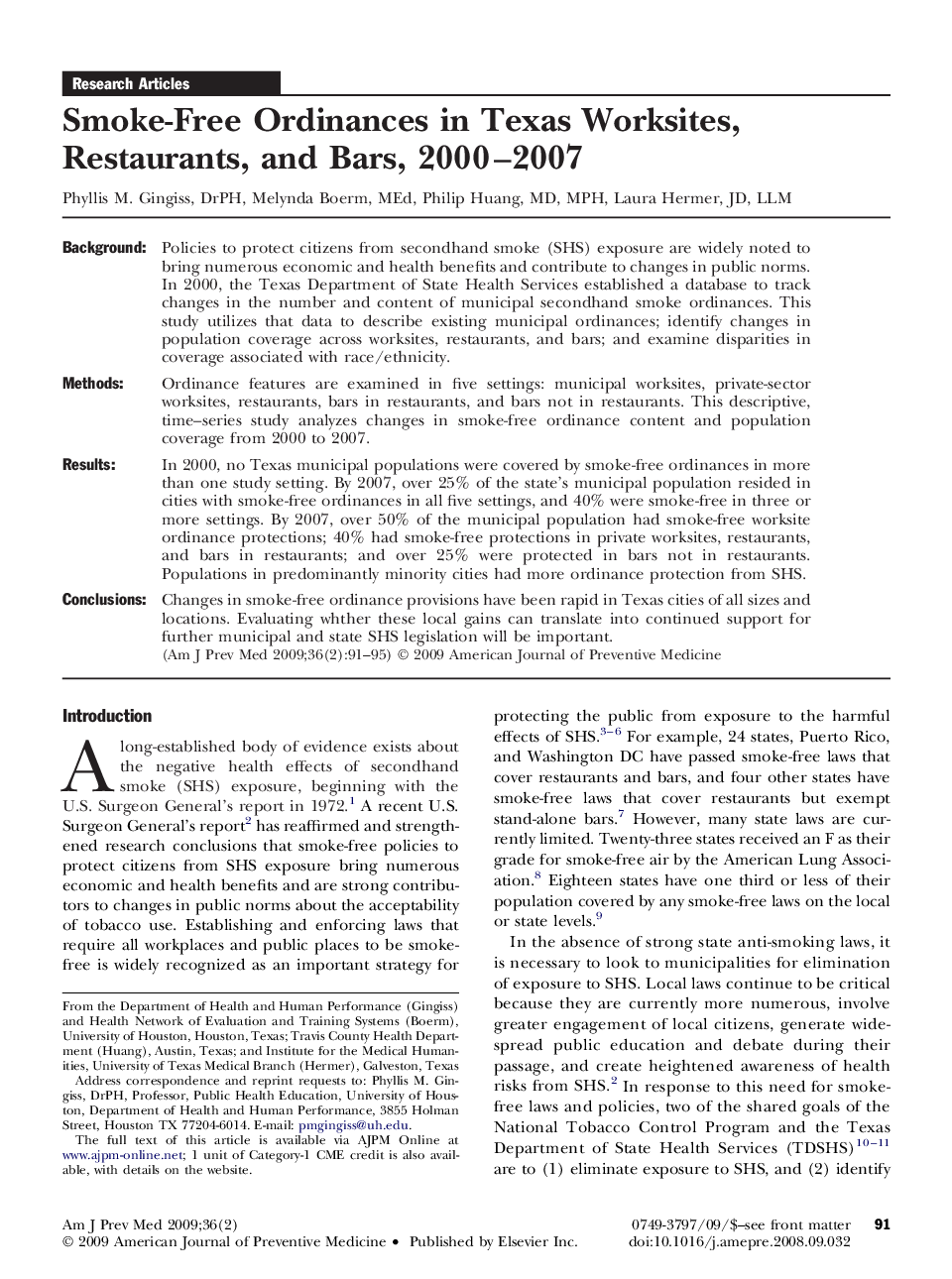| Article ID | Journal | Published Year | Pages | File Type |
|---|---|---|---|---|
| 4193421 | American Journal of Preventive Medicine | 2009 | 5 Pages |
BackgroundPolicies to protect citizens from secondhand smoke (SHS) exposure are widely noted to bring numerous economic and health benefits and contribute to changes in public norms. In 2000, the Texas Department of State Health Services established a database to track changes in the number and content of municipal secondhand smoke ordinances. This study utilizes that data to describe existing municipal ordinances; identify changes in population coverage across worksites, restaurants, and bars; and examine disparities in coverage associated with race/ethnicity.MethodsOrdinance features are examined in five settings: municipal worksites, private-sector worksites, restaurants, bars in restaurants, and bars not in restaurants. This descriptive, time–series study analyzes changes in smoke-free ordinance content and population coverage from 2000 to 2007.ResultsIn 2000, no Texas municipal populations were covered by smoke-free ordinances in more than one study setting. By 2007, over 25% of the state's municipal population resided in cities with smoke-free ordinances in all five settings, and 40% were smoke-free in three or more settings. By 2007, over 50% of the municipal population had smoke-free worksite ordinance protections; 40% had smoke-free protections in private worksites, restaurants, and bars in restaurants; and over 25% were protected in bars not in restaurants. Populations in predominantly minority cities had more ordinance protection from SHS.ConclusionsChanges in smoke-free ordinance provisions have been rapid in Texas cities of all sizes and locations. Evaluating whther these local gains can translate into continued support for further municipal and state SHS legislation will be important.
